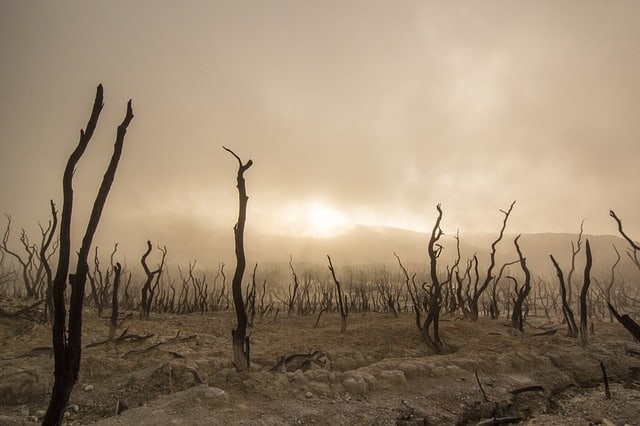The Australian government spends more than $1.5bn of taxpayer funds to climate change projects for planting trees or protecting native habitat since 2015. Besides, it has also spent nearly $62m on a policy promised under Tony Abbott to plant 20 million trees over a slightly more extended period.
Simultaneously, the country took up major land-clearing programs in several states, wiping out hundreds of thousands of hectares of forests, primarily for agriculture.
The land clearing of little more than two years cancels out the entire public spending and endeavour to avoid 125 million tonnes of carbon dioxide entering the atmosphere. The several years of effort put in the 20 million trees program are wiped out in just six months’ land clearing.
“It’s pretty absurd,” says Jess Panegyres, the Wilderness Society’s national nature campaigner.
“We’re putting huge amounts of taxpayer dollars into avoided deforestation and reforestation and at the same time we’re allowing Australia to become a deforestation hotspot globally. Any of the gains that we’re making under these taxpayer-funded schemes are being wiped out almost immediately.”
The Wilderness Society estimates using government figures that in 2017 alone, an area of forest and bushland of Melbourne Cricket Ground size was cleared every two minutes.
Last month, an academic study found that more than 7.7m hectares of an area larger than Tasmania, a habitat of potentially threatened species, had been cleared since 1999. As per the current provisions of national environment laws, before getting any land cleared, it needs to be referred for assessment and approval to the federal environment department. However, that has not happened in the case of 93% of this land.
Much of the land cleared so far is a regrown forest in areas that have been felled before, and there is also a mature forest, which is a deeper store of carbon dioxide. As per Scientists, both the forests need to be protected from stemming an unfolding extinction crisis for Australia.
Forest clearing is nothing new in Australia. Since the European invasion, the area covered by forest has fallen from about 30% to less than 16 %. However, in 2013, the Liberal-National government of Campbell Newman relaxed laws preventing mass deforestation in Queensland.
The Slats or data from the state’s world-leading vegetation monitoring system shows that in the five years that followed about an area of native vegetation of 1.7m hectares larger than greater Brisbane was bulldozed.
In the year 2017-18, the state government introduced more lenient native vegetation protection laws. The figures from the state’s Office of Environment and Heritage show clearing for crops pasture and thinning tripled between 2014-15 and 2017-18. Land clearing in New South Wales is also on the rise but yet not reached the heights of Queensland. Queensland tracks land clearing closely, but for the other parts of the country, the picture is less clear.
In recent years, data is available for more than 27,000 hectares of land cleared mostly between Moree and the Queensland border for agriculture, and that is nearly 100 times the size of Sydney’s central business district. The figure will rise to 58,000 hectares if native forestry is included.
The clearing had already escalated before the laws came into effect, the data shows. Though some Liberal ministers are having a deep concern for the scale and pace of the escalation and its impact on biodiversity, there was repeated call from the National party for protections to be wound back.
Some people who are planting trees on behalf of taxpayers are least bothered for the contrast. A small forest of native trees is grown on the 6km north-west of the New South Wales town around a human-made water-skiing area, the Moree water park, despite two years of drought in the region. It is primarily due to a $29,500 grant from the 20 million trees program, which will eventually lead to 7,000 trees being planted.
John Mailler, 80, a retired share farmer is working voluntarily on the project. He lists the local species: box trees, brigalow, carbeen, casuarina, emu apple or grewi, and roly poly. He loves the job but finds the loss of local vegetation around Moree as heartbreaking.
“It’s definitely changed. That was open grass country,” he says, gesturing towards the horizon to the east. “But it’s now crops, barley, wheat, chickpeas, lupins, cotton.
“They buy this wide machinery, and they say it’s too much of a problem to go round the trees so they get rid of them. It’s tragic.”
The north-west of NSW is considered ground zero for the loss of the tree. The woody vegetation covering 1,189 hectares in the Moree council area alone, roughly the size of the greater Melbourne area, was lost to cropping, pasture, and thinning in 2017-18. Next year, the situation is set to get even worse with the introduction of regional plans by the NSW government.
According to Bill Hare, the chief executive and senior scientist with Berlin-based Climate Analytics, the national emissions data published by the government conveyed a critical message that clearing likely to continue at existing rates for at least the next decade.
To be precise, pollution from land clearing is projected to be at about 46m tonnes of carbon dioxide a year to 2030, which is equivalent to emissions from nearly three large coal-fired power plants.
“That’s the bottom line,” Hare says. “This is significantly damaging the climate, as well as the natural environment, and Australia is not planning to do anything to stop it.”






